Abstract
Three pigeons pecked keys and 5 rats pressed levers for food delivered on variable-interval schedules. During baseline conditions, subjects responded on a variable-interval 40-s schedule throughout the session. During experimental conditions, the programmed rate of reinforcement changed every 10 min in the 50-min sessions. When rats served as subjects, Herrnstein's (1970) hyperbolic equation provided a good description of the relation between rate of responding during a 10-min interval and the rate of reinforcement obtained during that interval. Responding, measured over 10-min blocks, was also approximately equally sensitive to changes in the programmed rate of reinforcement at all times in the session. Herrnstein's equation provided a poorer description of the changes in responding when pigeons served as subjects. Differences in experimental experience or differences in the absolute rates at which subjects responded may have contributed to the differences in results for these different species.
Keywords: variable-interval schedule, within-session patterns of responding, Herrnstein's equation, matching law, key peck, lever press, pigeons, rats
Full text
PDF
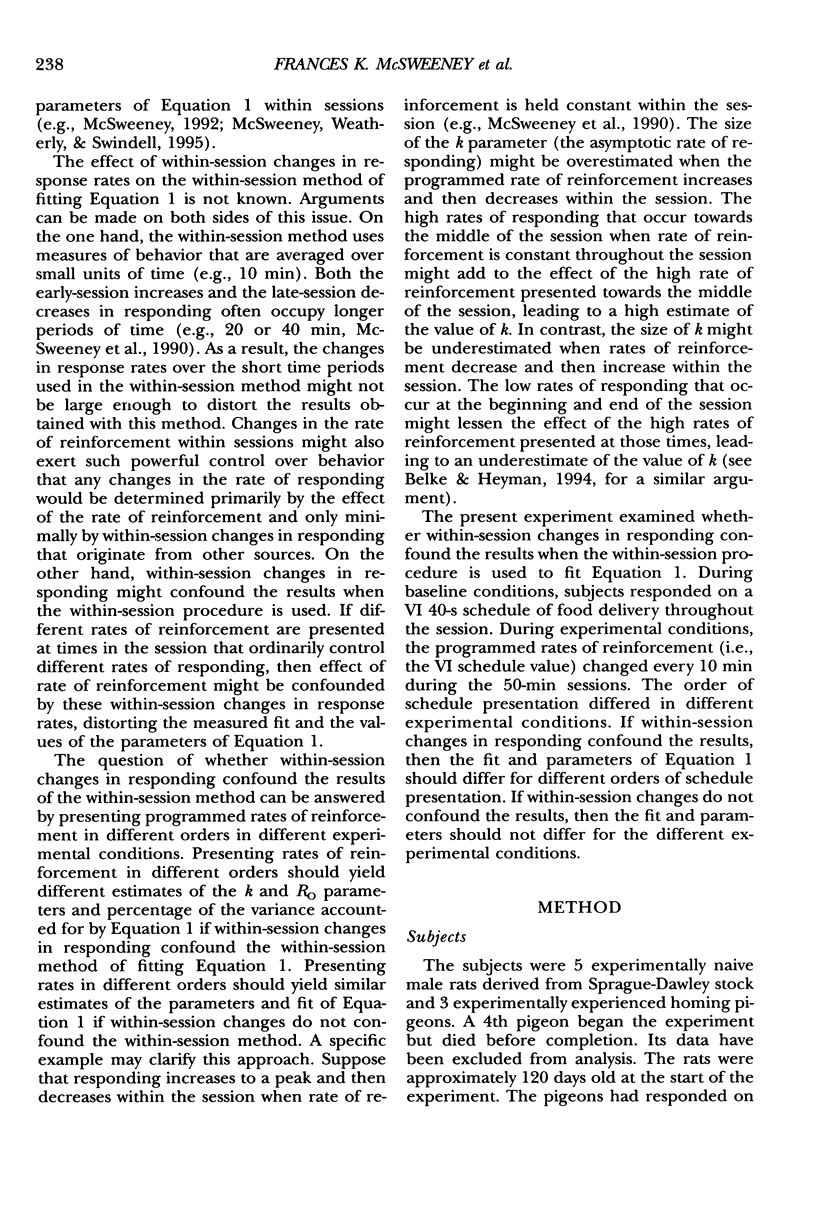

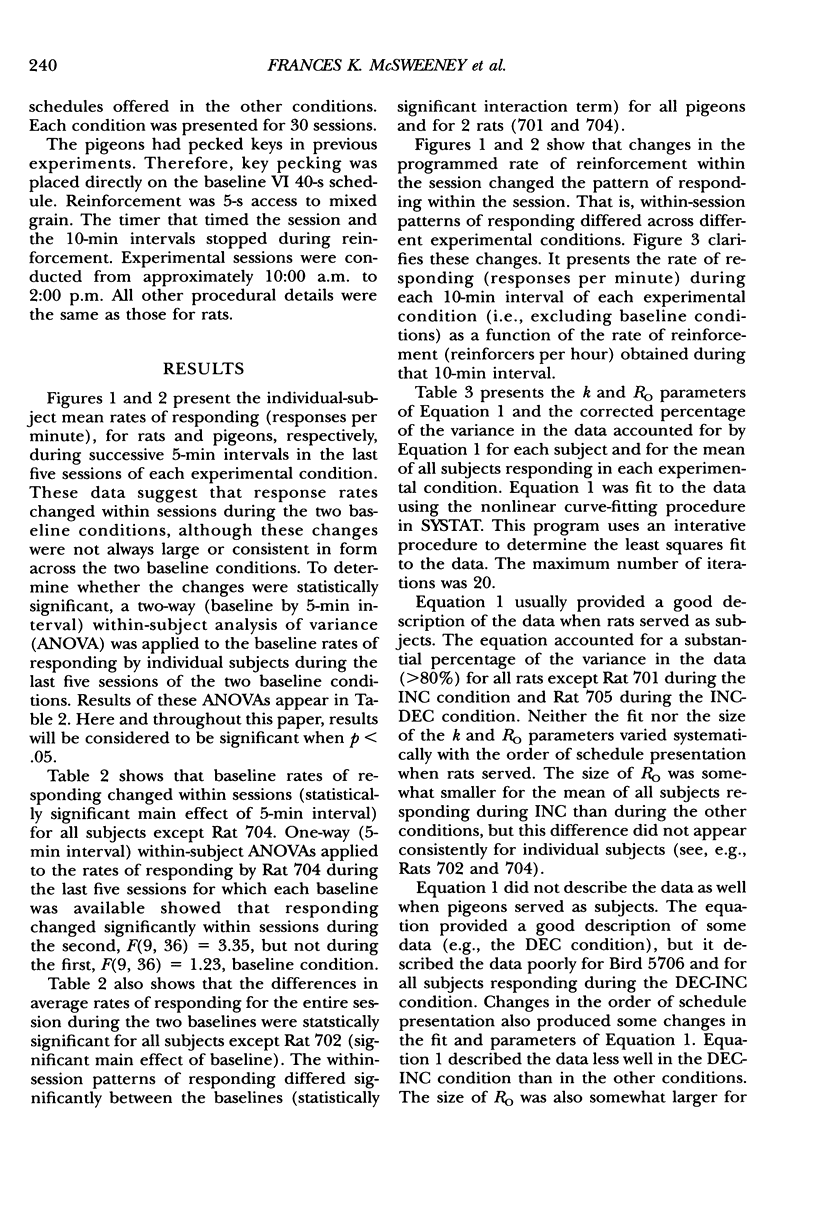
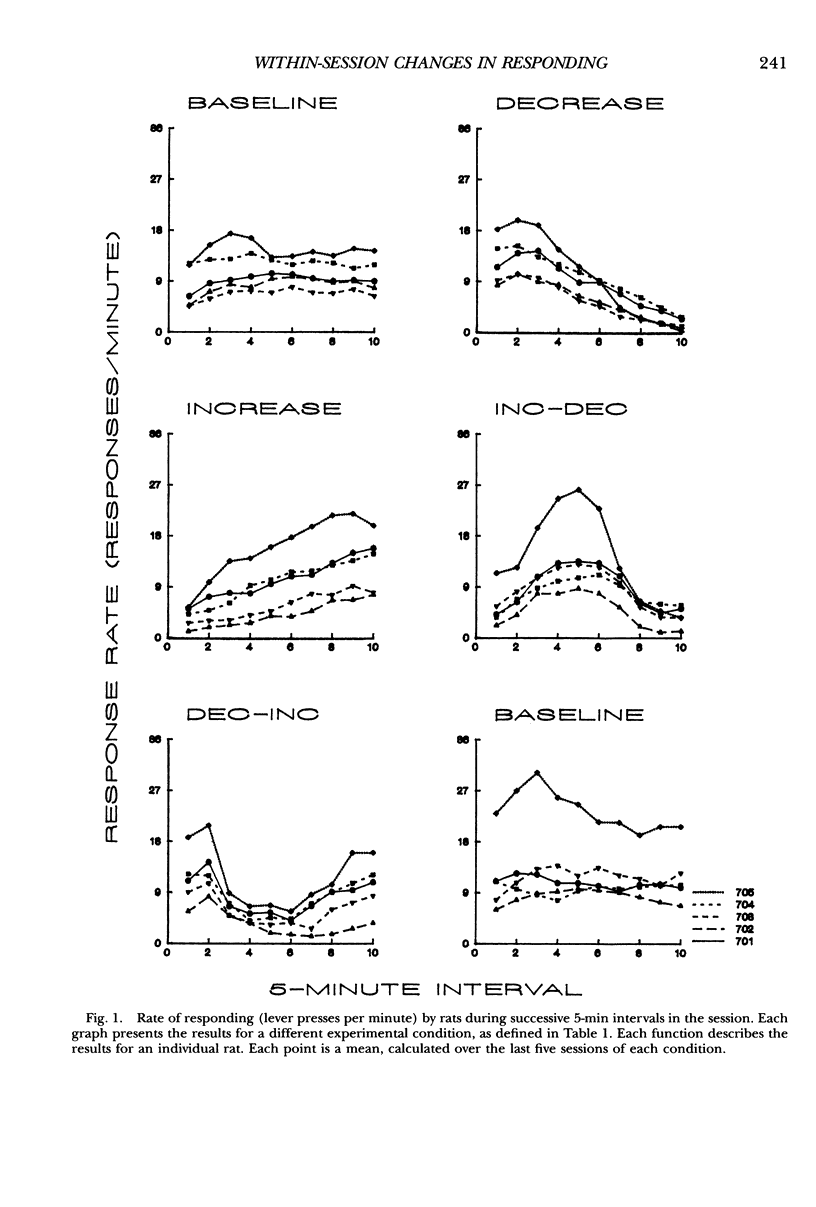
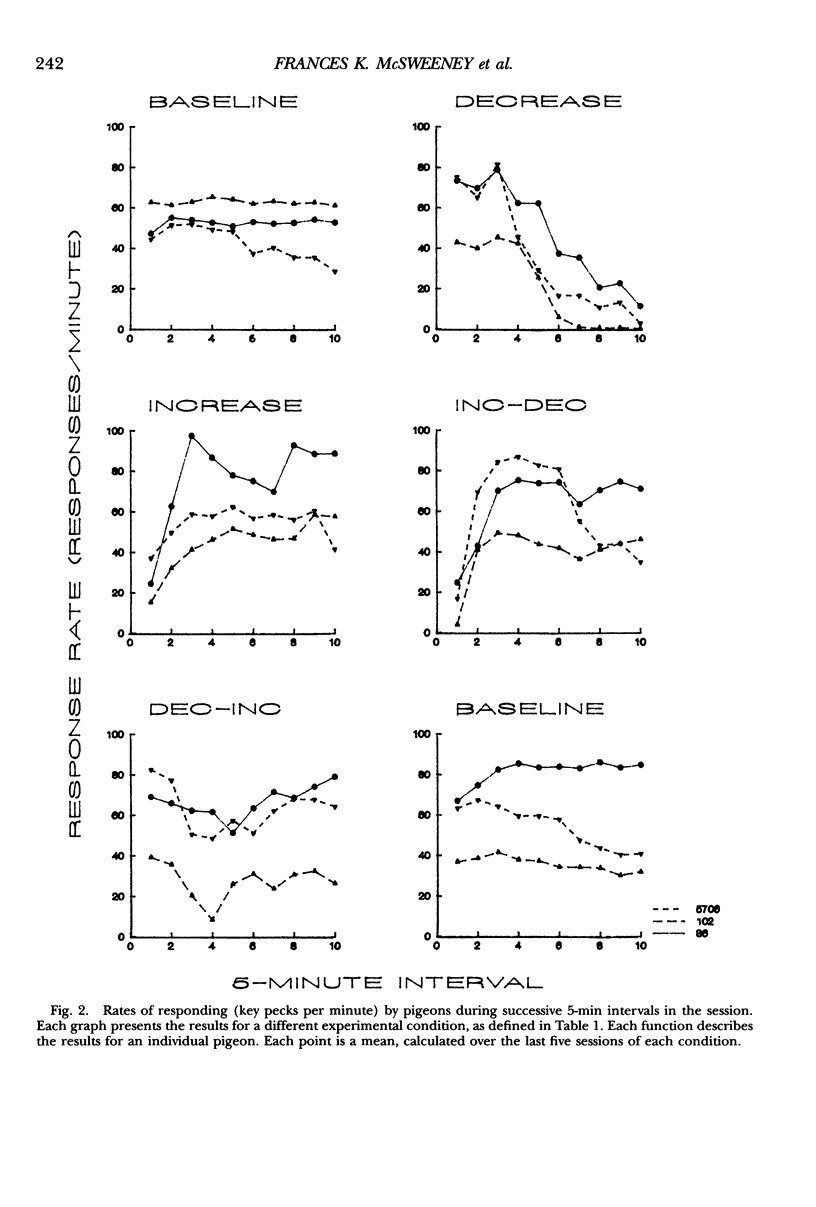
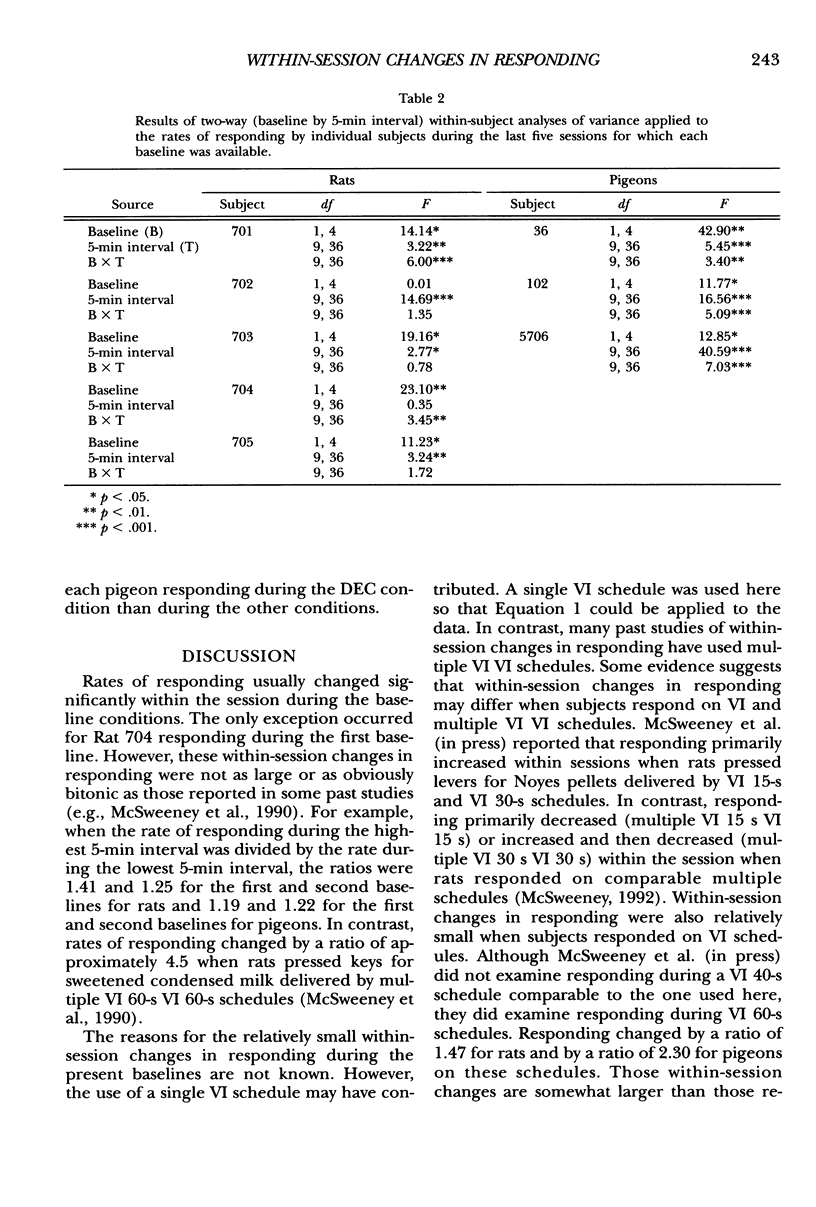
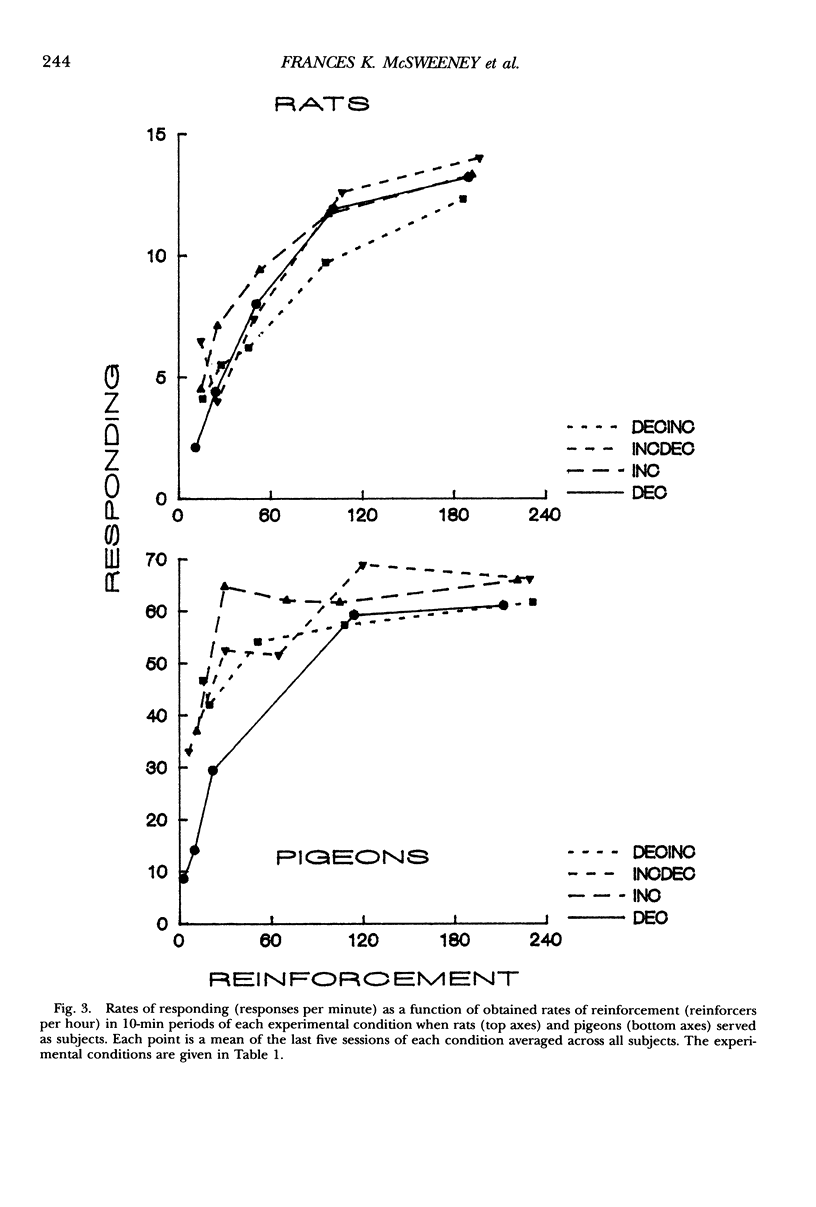
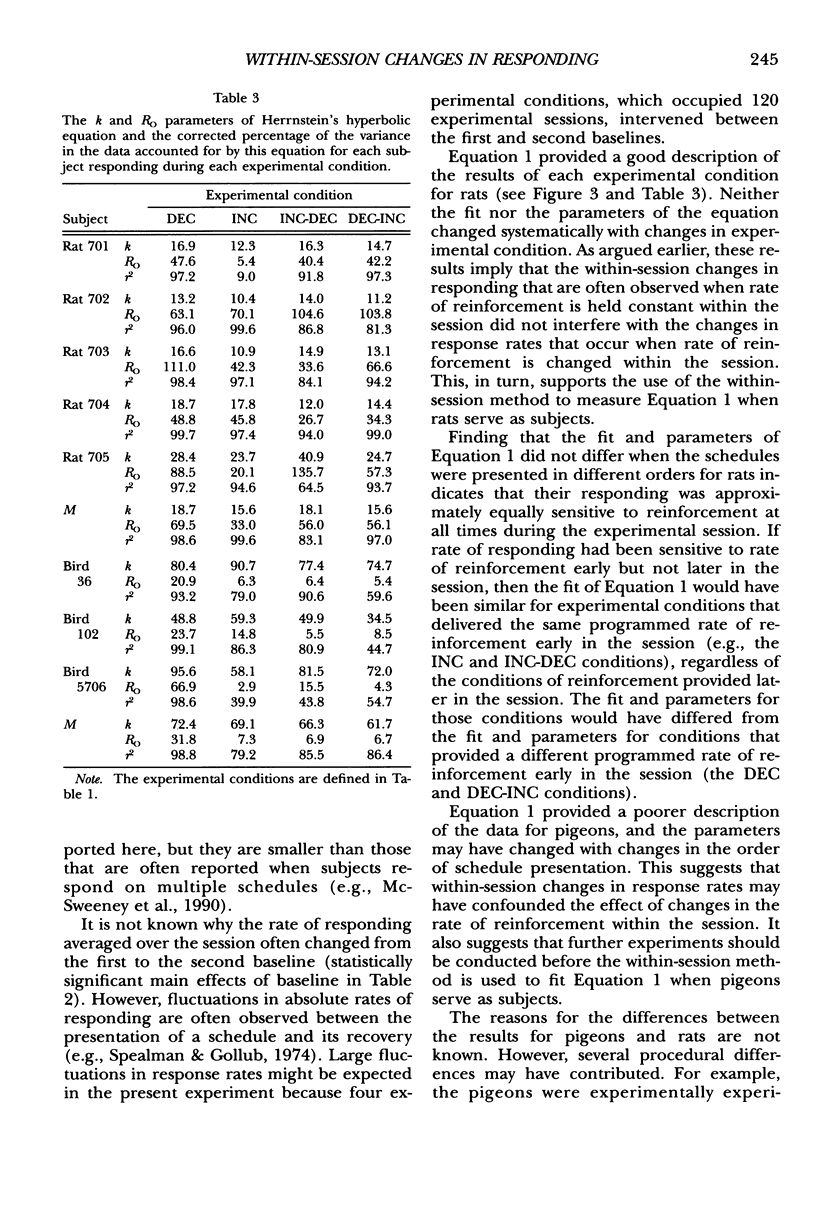

Selected References
These references are in PubMed. This may not be the complete list of references from this article.
- Belke T. W., Heyman G. M. Increasing and signaling background reinforcement: effect on the foreground response-reinforcer relation. J Exp Anal Behav. 1994 Jan;61(1):65–81. doi: 10.1901/jeab.1994.61-65. [DOI] [PMC free article] [PubMed] [Google Scholar]
- Catania A. C., Reynolds G. S. A quantitative analysis of the responding maintained by interval schedules of reinforcement. J Exp Anal Behav. 1968 May;11(3 Suppl):327–383. doi: 10.1901/jeab.1968.11-s327. [DOI] [PMC free article] [PubMed] [Google Scholar]
- Dougan J. D., McSweeney F. K. Variation in Herrnstein's r(o) as a function of alternative reinforcement rate. J Exp Anal Behav. 1985 Mar;43(2):215–223. doi: 10.1901/jeab.1985.43-215. [DOI] [PMC free article] [PubMed] [Google Scholar]
- FLESHLER M., HOFFMAN H. S. A progression for generating variable-interval schedules. J Exp Anal Behav. 1962 Oct;5:529–530. doi: 10.1901/jeab.1962.5-529. [DOI] [PMC free article] [PubMed] [Google Scholar]
- Herrnstein R. J. On the law of effect. J Exp Anal Behav. 1970 Mar;13(2):243–266. doi: 10.1901/jeab.1970.13-243. [DOI] [PMC free article] [PubMed] [Google Scholar]
- Heyman G. M. A parametric evaluation of the hedonic and motoric effects of drugs: pimozide and amphetamine. J Exp Anal Behav. 1983 Sep;40(2):113–122. doi: 10.1901/jeab.1983.40-113. [DOI] [PMC free article] [PubMed] [Google Scholar]
- McDowell J. J., Wood H. M. Confirmation of linear system theory prediction: Changes in Herrnstein's k as a function of changes in reinforcer magnitude. J Exp Anal Behav. 1984 Mar;41(2):183–192. doi: 10.1901/jeab.1984.41-183. [DOI] [PMC free article] [PubMed] [Google Scholar]
- McSweeney F. K., Weatherly J. N., Swindell S. Within-session changes in key and lever pressing for water during several multiple variable-interval schedules. J Exp Anal Behav. 1995 Jul;64(1):75–94. doi: 10.1901/jeab.1995.64-75. [DOI] [PMC free article] [PubMed] [Google Scholar]
- Spealman R. D., Gollub L. R. Behavioral interactions in multiple variable-interval schedules. J Exp Anal Behav. 1974 Nov;22(3):471–481. doi: 10.1901/jeab.1974.22-471. [DOI] [PMC free article] [PubMed] [Google Scholar]


